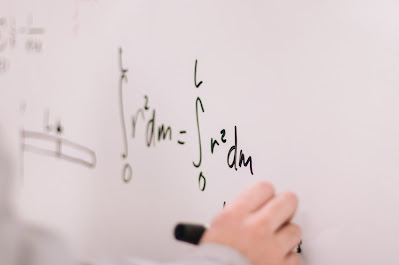ELECTRONIC ENGINEERING TECHNOLOGY |
The application form of electronic engineering covers electric equipment and various electric switches using control technology, measuring technology, adjustment technology, computer technology, and information technology.
The Term
Although the abbreviations are the same as EE, the research fields of Electronic Engineering (Electronics Engineering), Power Engineering, and Electrical Engineering are not the same. Electronic engineering is usually a discipline related to computer hardware, electronics, microelectronics, and integrated circuits. The voltage involved is usually low, and it is used as a signal to carry the signal. High voltage.History
The discipline of modern electronic engineering emerged to a large extent with the development of telephone, radio, television and radar, sonar, and communication systems in the two world wars. In the late 1950s, the term electronic engineering began to appear.In 1893, Nikola Tesla demonstrated radio communication to the public for the first time. In 1904, John Fleming, an electric professor at University College London, invented the diode. [1] One year later, in 1906, Robert von Liben and Lied Forrest called the independently developed amplifier tube a transistor (called a triode or triode in the mainland). Important inventions in the development of electronic engineering include televisions, transistors (transistors), electronic computers, and microprocessors.
Application
In the field of electronic engineering, engineers design and test electronic circuits. Circuits are composed of various electronic components (such as resistors, capacitors, inductors, diodes, and transistors) and implement specific functions. When designing integrated circuits, electronic engineers first construct circuit schematics, specify electronic components, and describe their interrelationships. After the completion, the VLSI engineer converted the principle into the actual layout. In this process, various conductors and semiconductor materials were used to make the circuit. Once the layout is completed it can be sent to the manufacturing plant. Integrated circuits and other electronic components can Assembled on printed circuit boards to form more complex circuits. Today, printed circuit boards can be found in most electronic products, including televisions, computers, and audio players.Electromagnetic field theory
1. Gauss's law, Stokes' theorem, Maxwell's equations in different media (including differential and integral forms)2. Wave equation, Poynting vector, plane wave propagation reflection and refraction, phase and group velocity
3. Transmission line characteristic impedance, impedance transformation, Smith chart, impedance matching, pulse excitation, waveguide, rectangular waveguide, boundary conditions, cutoff frequency, dispersion relationship
4. Antenna: dipole antenna, antenna array, radiation pattern.
Electronic devices and circuits & Analog and digital circuits
1. Electronic equipment: semiconductor, PN junction, diode, zener diode, tunnel diode, bipolar transistor, field effect tube, capacitor, photodiode
2. Integrated circuit manufacturing process: oxidation, diffusion, ion implantation, photolithography and CMOS process
3. Composition of various amplifiers and response to frequency, operational amplifiers, filters, sine wave oscillators, function signal generators and rectifier circuits, rectifier power supply systems
4. Boolean algebra, logic gate circuit (TTL, ECL, CMOS); combination logic circuit decoder and decoder, sequential circuit trigger, counter and shift register
5. Analog to digital converter, digital to analog converter, semiconductor memory, microprocessor
Signals and Systems
1. Laplace transform, continuous time and discrete time Fourier series, continuous time and discrete time Fourier transform, Z transform
2. Sampling theorem and properties of linear time-invariant systems, random signals and noise
Control System
The basic components of the control system
1. Analysis of open-loop and closed-loop (negative feedback) systems and stable systems
2. Signal flow diagram and its use in determining system transfer function
3. Transient stable LTI control system and frequency response state analysis
4. Analysis of steady-state interference and noise sensitivity
5. Analysis and design techniques for linear time-invariant tools and control systems
6. Analog communication system: amplitude and angle modulation and demodulation system, analysis of spectrum noise
7. Digital communication system: pulse code modulation (PCM), digital modulation, amplitude and frequency phase shift keying, matched filter receiver, bandwidth and error detection and correction mechanism, GSM, time division multiple (TDMA)
Subdomain
There are many branches of electronic engineering. This section covers many branches of electronic engineering. Some engineers focus on one sub-field, and many engineers work in several fields.Signal Processing: Signal analysis and processing. The signal can be analog (the signal changes continuously) or digital (the signal is represented by some discrete values). For example, for analog signals, signal processing involves the amplification and filtering of speech signals in speech equipment, or the modulation and demodulation of signals in communications. For digital signals, signal processing may involve signal compression, error detection, and error correction.
Communication Engineering: How to process information through a channel, such as coaxial cable, optical fiber or free space.
This may be designed to design new hardware, or use the computer to control the production of the factory. It is also possible to work at the software level, which has some overlap with the field of software engineering.
Project
For most engineers working on the latest system design and development, technical work is only part of their job. Much of their time is spent discussing with clients, preparing budgets and determining project schedules. Many senior engineers manage a group of technicians and engineers, so project management skills are important. Many engineering projects include writing documents, so written writing skills are also important.The working location of electronic engineers is related to their job type. It may be the laboratory of a factory, the office of a consulting company or the laboratory of a research institution. Their work requires dealing with scientists, technicians, programmers and other engineers.












Comments
Post a Comment